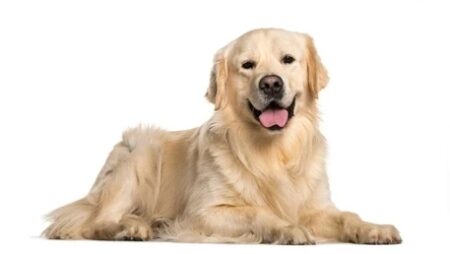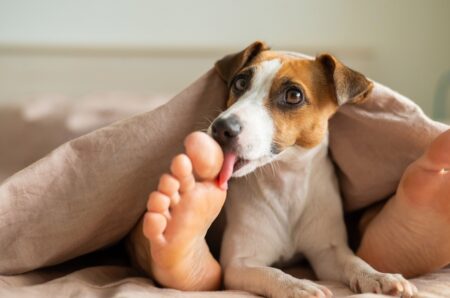Are Dogs Mouths Cleaner Than Humans?
The question of whether a dog’s mouth is cleaner than a human’s has recently gained popularity. The idea is that since a dog’s mouth lacks the same number of bacteria that a human’s has, their saliva is somehow cleaner than ours. However, it is important to note that studies have not been done to prove this claim and much of the evidence is anecdotal. In addition, it is important to understand that there are different types of bacteria that live in our respective mouths, and it is impossible to accurately compare the two. In the end, the answer to this question depends on a variety of factors and it is not a simple yes or no answer.
Are Dogs Mouths Cleaner Than Humans?
The old adage that “a dog’s mouth is cleaner than a human’s” is an often-repeated statement, but is it true? While it is true that dogs are exposed to fewer potential pathogens than humans are, there is no actual scientific evidence that their mouths are “cleaner” than human mouths.
The truth is that a dog’s mouth contains its own unique set of bacteria and viruses, which are both beneficial and potentially harmful. As you can imagine, the bacteria and viruses that inhabit a dog’s mouth will vary depending on age, diet, and other lifestyle factors; therefore, it’s impossible to make a blanket determination of a dog’s “cleanliness.”
The American Veterinary Medical Association (AVMA) has stated that “there is a misconception that the saliva of dogs is ‘cleaner’ than that of humans and can be used to clean wounds.” So while a dog’s saliva may contain antimicrobial properties that can help fight off infections, it is always better to use a properly-formulated topical ointment or first-aid product for wounds on humans or animals alike.
On the other hand, one of the advantages that dogs have over humans is the fact that they’re better able to keep their mouths clean. Dogs are able to use their tongues to wash away food particles and bacteria from their teeth, whereas humans must use toothbrushes and dental floss. This means that dogs are less likely to suffer from tooth decay and other mouth diseases, making their mouths less likely to act as a vector for bacteria.
All in all, there is no scientific basis for saying that a dog’s mouth is actually “cleaner” than a human’s. However, it is important to remember that dogs still need to be brushing and have routine dental exams in order to keep their mouth healthy and free of disease. While the old adage that “a dog’s mouth is cleaner than a human’s” may be comforting, it is best to rely on facts to make your decision.
Bacteria in Dog and Human Mouths
Bacteria are microscopic organisms that are found in both dog and human mouths. These bacteria vary in size, shape, and type and can be either beneficial or harmful. In dogs, the bacteria in the mouth can help to break down food particles, create enzymes for digestion, and help to prevent plaque. In humans, the bacteria in the mouth can help provide immune system support, protect the teeth from cavities, and produce vitamins. The bacteria in both animal and human mouths can also contribute to health issues if not kept in balance. Poor oral hygiene can lead to periodontal disease and infections in both humans and dogs.
SEE ALSO: Why Do Dogs Have Tails?
How Important Is a Dog’s Oral Hygiene?
Dogs’ oral hygiene is extremely important and should be taken seriously as poor dental hygiene can lead to a variety of serious and costly health issues. Regular brushing, regular dental cleanings by a veterinarian, and a healthy diet can help keep a dog’s teeth and gums healthy and in the best shape possible.
How to Clean a Dog’s Mouth
Cleaning your dog’s mouth is important for oral health and hygiene. Here are some steps to clean a dog’s mouth:
- Brush your dog’s teeth: Brushing your dog’s teeth is the most effective way to keep your dog’s mouth healthy and clean. It helps to remove plaque, tartar, and bacteria on the teeth. Use a soft-bristled toothbrush and toothpaste made specifically for dogs. Try to brush your dog’s teeth on a daily basis.
- Clean the gums: Use a gauze pad or a soft cloth to gently clean your dog’s gums and tongue. Start by gently massaging the gums with a cloth or gauze pad to break up any food particles or plaque that might have built up.
- Rinse: Fill a cup with lukewarm water and use it to rinse your dog’s mouth and gums. Make sure to rinse out any chunks of food or plaque that have been dislodged by the brushing and cleaning process.
- Use a dental wash: A dental wash can help keep your dog’s mouth clean and healthy. Choose a dental wash that is specifically made for pets and has additional ingredients that can help keep plaque and bacteria at bay.
- Offer dental chews or treats: Offer your dog dental chews or dental treats to help keep their teeth and gums healthy. Choose products that are specifically designed to help reduce plaque and tartar build-up.
- Regular vet check-ups: Keep your dog’s mouth healthy by taking them for regular check-ups with their veterinarian. This is the best way to identify any underlying issues that could affect your dog’s oral health.
By following these steps, you can help keep your dog’s mouth healthy and clean.
What Diseases Can You Get from Dog Saliva?
There are a number of diseases that can be contracted through contact with a dog’s saliva. These include the following:
- Leptospirosis: This is a bacterial infection caused by a type of Leptospira bacteria that can be found in an infected animal or its urine. Dogs can become infected by drinking contaminated water or coming into contact with urine from an infected animal, such as another dog or rodent. Humans contract leptospirosis by coming into contact with infected animal urine or through contact with an infected dog’s saliva. Symptoms of leptospirosis in humans include fever, chills, muscle pain, diarrhea, and vomiting.
- Rabies: This is a viral infection that is spread through the saliva of an infected animal, typically through a bite. Rabies can cause inflammation of the brain and death if left untreated. Symptoms in humans can include confusion, fever, muscle spasms, seizures, and hallucinations.
- Salmonella: This is a type of bacterial infection that can be spread through contact with an infected animal’s saliva, feces, or urine. Symptoms in humans can include fever, abdominal cramps, and diarrhea.
- Giardia: This is a parasitic infection that can be spread through contact with an infected animal’s feces, saliva, or urine. The symptoms in humans can include diarrhea, abdominal pain, and nausea.
- Lyme Disease: This is a bacterial infection that is spread through the saliva of an infected tick. Symptoms in humans can include fever, fatigue, and a bulls-eye-shaped rash.
How to Keep Your Dog From Licking You
There are several ways to keep your dog from licking you, but each dog is different and each situation is different.
- Deterrents: A common way to deter licking is to use a deterrent, such as a bitter-tasting spray or lotion. Simply spray or apply a small amount of deterrent product onto the places on your body that your dog is prone to licking, and the taste will usually discourage them from the habit. Deterrents can be found in pet stores, or you can also make your own deterrent by mixing water, white vinegar, and lemon juice.
- Keep Unpleasant Tastes Around: Some dogs prefer certain tastes over others, so it’s important to keep unpleasant tastes around to discourage mouth-to-skin contact. You can sprinkle something like pepper powder on your skin, or put hot sauce on your hands.
- Distract and Redirect: If you happen to catch your dog in the act of licking you, instead of scolding them, try to distract or redirect the attention away from you. Give them something like a toy or treat to focus on, and reward them for not licking you.
- Establish Boundaries: If a particular area of your body is especially vulnerable to your dog’s licking, it’s a good idea to set some boundaries. Teach your dog that there are certain areas that are off-limits, and ensuring that you consistently enforce these boundaries will help your dog learn and remember to respect your personal space.
- Positive Reinforcement: Finally, positive reinforcement is always an important tool for training your dog. If your dog ever stops licking you when you ask, be sure to give them a reward or verbal praise in order to reinforce the behavior.
How to Reduce Your Dog’s Risk of Disease
- Vaccinate regularly: Make sure your pet is up-to-date on their vaccines and follow a regular schedule for yearly checkups and boosters. Vaccines can help protect against some of the most common and serious diseases, such as canine parvovirus, distemper, and rabies.
- Feed a nutritious, balanced diet: Keeping your dog at a healthy weight and providing them with a balanced diet can go a long way toward preventing disease. Choose a food designed for your pet’s size, age, activity level, and breed.
- Monitor for parasites: Regularly check your dog for fleas, ticks, and other parasites. Treat your pet with preventative medications such as heartworm preventatives or flea and tick products to reduce their risk of becoming infected.
- Keep your dog active: Exercise is important to keep your pet healthy and happy. Daily walks and playtime can help maintain the correct weight and provide mental stimulation to keep your dog engaged.
- Practice good hygiene: Clean your pet’s bedding, toys, and food and water dishes regularly with warm, soapy water. Bathing can help remove dirt, debris, and allergens that can contribute to disease.
- Provide proper dental care: Good dental hygiene can help prevent bacterial infections in the mouth and other parts of the body. Brush your pet’s teeth regularly or consult your veterinarian for professional dental cleaning.
- Stay on top of flea and tick prevention: Fleas and ticks can spread a variety of dangerous diseases. Use medications such as flea collars and topical medications to prevent infestations.
- Visit the vet: If you notice any changes in your pet’s appetite, behavior, or mobility, call your veterinarian to schedule a visit. Early diagnosis and treatment can help prevent serious illness or injury.
SEE ALSO: Why Do Dogs Like Squeaky Toys?
FAQs
Q. Can You Get Infections and Diseases From Dog Saliva?
A. Yes, it is possible to get infections and diseases from dog saliva, even if the dog is healthy. Examples of diseases include rabies, capnocytophaga, and pasteurella.
Q. Is it Bad If Your Dog Licks You Then?
A. No, it is not bad if your dog licks you. In fact, licking is a sign of affection and is a way for your dog to show you that they care.
Q. Should I Brush My Dog’s Teeth?
A. Yes, you should brush your dog’s teeth regularly to keep them healthy and free from plaque and tartar buildup.
Q. Is Dog Saliva Bad For Your Skin?
A. No, dog saliva is not considered to be bad for your skin. In fact, it contains natural antibacterial properties that can help clean wounds and prevent infection.
Q. Are the Bacteria in a Dog’s Mouth Harmful?
A. Yes, the bacteria in a dog’s mouth can be harmful, as they can spread to humans and cause illnesses such as bacterial infections, gastrointestinal issues, and more.
Conclusion
Overall, research suggests that dogs’ mouths are not necessarily cleaner than humans’ mouths. While dogs do have fewer bacteria in their mouths than humans, they are also known to have certain types of bacteria that can cause disease in humans. Even though dog saliva has antibacterial properties, it can still transmit serious bacterial, viral, and fungal infections if transmitted from one species to another. Therefore, it is important to be careful when interacting with a dog’s mouth and practice proper hygiene to prevent the spread of any harmful bacteria.


